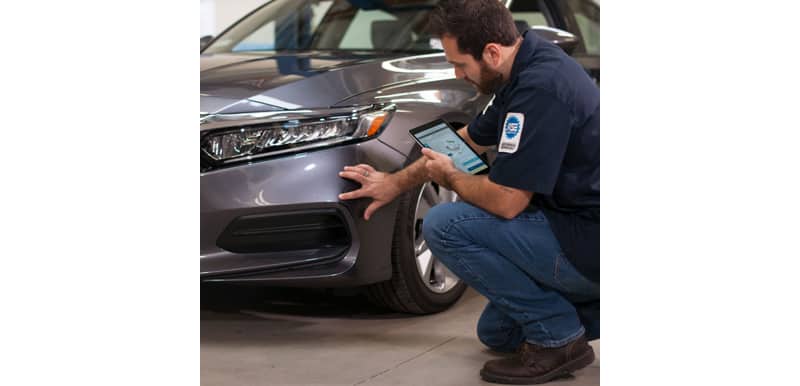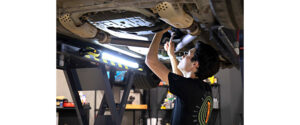The integration between carrier and shop workflows helps ensure that estimates include the appropriate diagnostic procedures are performed
San Diego—Mitchell has announced the availability of a new feature in Mitchell Cloud Estimating that automatically detects a completed scan or calibration and gives users the ability to quickly add it as a line on the collision-damage appraisal. This enhanced integration between carrier and shop workflows helps ensure that estimates include the appropriate diagnostic procedures are performed.
It is also designed to assist independent, staff and shop appraisers with maintaining accurate records while giving vehicle owners added visibility into the repair work completed.
The release comes as the company announces another major milestone for the Mitchell Diagnostics platform: more than 5 million scans and 125,000 static and dynamic calibrations performed by U.S. and Canadian customers.
Launched in 2017 as the industry’s first diagnostic system developed for the collision repair and automotive claims markets, the platform’s scan volume has grown by more than 2 million in less than 2 years with availability of the MD-500 all-in-one device.
The number of calibrations has also increased significantly since late 2021, rising 150% after the introduction of the MD-TS21 target system. Both tools incorporate Bosch’s best-in-class vehicle coverage and hardware with the ability to run Mitchell’s full suite of cloud solutions, including Mitchell Cloud Estimating.
“Diagnostic scanning and calibration are becoming a standard part of collision repair,” said Jack Rozint, senior vice president of repair sales at Mitchell. “By enhancing our Diagnostics as a Service platform and more tightly integrating it with Mitchell Cloud Estimating, we can provide collision facilities with an end-to-end solution designed to efficiently manage repairs, documentation and billing.”
When configured, the new feature in Mitchell Cloud Estimating automatically detects diagnostic procedures performed on the vehicle with a Mitchell Diagnostics device and indexes the related scan and calibration documents associated with a claim. Then, in the estimating system, it surfaces a list of available scan and calibration operations related to the automobile. Estimators can select the applicable diagnostic lines and update the appraisal with the relevant operations, labor times and prices.
“Our shop performs hundreds of diagnostic scans and calibrations each month,” said Gabe Scognamiglio, president of Touch of Class Collision. “So it is critical that we account for that work on every estimate or supplement. This gives our customers peace of mind knowing the work was done and a proper, safe repair was delivered. It also gives our business the ability to easily document this work and submit the expense for reimbursement.”














Comments are closed.